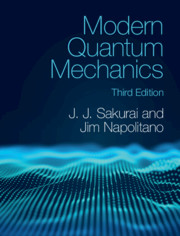
In physics, electromagnetism is an interaction that occurs between particles with electric charge via electromagnetic fields. The electromagnetic force is one of the four fundamental forces of nature. It is the dominant force in the interactions of atoms and molecules. Electromagnetism can be thought of as a combination of electrostatics and magnetism, which are distinct but closely intertwined phenomena. Electromagnetic forces occur between any two charged particles. Electric forces cause an attraction between particles with opposite charges and repulsion between particles with the same charge, while magnetism is an interaction that occurs between charged particles in relative motion. These two forces are described in terms of electromagnetic fields. Macroscopic charged objects are described in terms of Coulomb's law for electricity and Ampère's force law for magnetism; the Lorentz force describes microscopic charged particles.

An electromagnetic field is a physical field, mathematical functions of position and time, representing the influences on and due to electric charges. The field at any point in space and time can be regarded as a combination of an electric field and a magnetic field. Because of the interrelationship between the fields, a disturbance in the electric field can create a disturbance in the magnetic field which in turn affects the electric field, leading to an oscillation that propagates through space, known as an electromagnetic wave.

In Newtonian mechanics, momentum is the product of the mass and velocity of an object. It is a vector quantity, possessing a magnitude and a direction. If m is an object's mass and v is its velocity, then the object's momentum p is:

In physics, specifically electromagnetism, the Biot–Savart law is an equation describing the magnetic field generated by a constant electric current. It relates the magnetic field to the magnitude, direction, length, and proximity of the electric current.

Mathematical physics refers to the development of mathematical methods for application to problems in physics. The Journal of Mathematical Physics defines the field as "the application of mathematics to problems in physics and the development of mathematical methods suitable for such applications and for the formulation of physical theories". An alternative definition would also include those mathematics that are inspired by physics, known as physical mathematics.

In classical electromagnetism, Ampère's circuital law relates the circulation of a magnetic field around a closed loop to the electric current passing through the loop.
In science and especially in mathematical studies, a variational principle is one that enables a problem to be solved using calculus of variations, which concerns finding functions that optimize the values of quantities that depend on those functions. For example, the problem of determining the shape of a hanging chain suspended at both ends—a catenary—can be solved using variational calculus, and in this case, the variational principle is the following: The solution is a function that minimizes the gravitational potential energy of the chain.

David Jeffrey Griffiths is an American physicist and educator. He was on the faculty of Reed College from 1978 through 2009, becoming the Howard Vollum Professor of Science before his retirement. He wrote three highly regarded textbooks for undergraduate physics students.

Faraday's law of induction is a law of electromagnetism predicting how a magnetic field will interact with an electric circuit to produce an electromotive force (emf). This phenomenon, known as electromagnetic induction, is the fundamental operating principle of transformers, inductors, and many types of electric motors, generators and solenoids.

In special and general relativity, the four-current is the four-dimensional analogue of the current density, with units of charge per unit time per unit area. Also known as vector current, it is used in the geometric context of four-dimensional spacetime, rather than separating time from three-dimensional space. Mathematically it is a four-vector and is Lorentz covariant.

In electromagnetism, Jefimenko's equations give the electric field and magnetic field due to a distribution of electric charges and electric current in space, that takes into account the propagation delay of the fields due to the finite speed of light and relativistic effects. Therefore, they can be used for moving charges and currents. They are the particular solutions to Maxwell's equations for any arbitrary distribution of charges and currents.

In electromagnetism and applications, an inhomogeneous electromagnetic wave equation, or nonhomogeneous electromagnetic wave equation, is one of a set of wave equations describing the propagation of electromagnetic waves generated by nonzero source charges and currents. The source terms in the wave equations make the partial differential equations inhomogeneous, if the source terms are zero the equations reduce to the homogeneous electromagnetic wave equations. The equations follow from Maxwell's equations.

Classical Mechanics is a textbook written by Herbert Goldstein, a professor at Columbia University. Intended for advanced undergraduate and beginning graduate students, it has been one of the standard references on its subject around the world since its first publication in 1950.

In physics, a field is a physical quantity, represented by a scalar, vector, or tensor, that has a value for each point in space and time. For example, on a weather map, the surface temperature is described by assigning a number to each point on the map; the temperature can be considered at a certain point in time or over some interval of time, to study the dynamics of temperature change. A surface wind map, assigning an arrow to each point on a map that describes the wind speed and direction at that point, is an example of a vector field, i.e. a 1-dimensional (rank-1) tensor field. Field theories, mathematical descriptions of how field values change in space and time, are ubiquitous in physics. For instance, the electric field is another rank-1 tensor field, while electrodynamics can be formulated in terms of two interacting vector fields at each point in spacetime, or as a single-rank 2-tensor field.

The Feynman Lectures on Physics is a physics textbook based on a great number of lectures by Richard Feynman, a Nobel laureate who has sometimes been called "The Great Explainer". The lectures were presented before undergraduate students at the California Institute of Technology (Caltech), during 1961–1963. The book's co-authors are Feynman, Robert B. Leighton, and Matthew Sands.

Classical Electrodynamics is a textbook written by theoretical particle and nuclear physicist John David Jackson. The book originated as lecture notes that Jackson prepared for teaching graduate-level electromagnetism first at McGill University and then at the University of Illinois at Urbana-Champaign. Intended for graduate students, and often known as Jackson for short, it has been a standard reference on its subject since its first publication in 1962.
Introduction to Quantum Mechanics, often called Griffiths, is an introductory textbook on quantum mechanics by David J. Griffiths. The book is considered a standard undergraduate textbook in the subject. Originally published by Pearson Education in 1995 with a second edition in 2005, Cambridge University Press (CUP) reprinted the second edition in 2017. In 2018, CUP released a third edition of the book with Darrell F. Schroeter as co-author; this edition is known as Griffiths and Schroeter.

Modern Quantum Mechanics, often called Sakurai or Sakurai and Napolitano, is a standard graduate-level quantum mechanics textbook written originally by J. J. Sakurai and edited by San Fu Tuan in 1985, with later editions coauthored by Jim Napolitano. Sakurai died in 1982 before he could finish the textbook and both the first edition of the book, published in 1985 by Benjamin Cummings, and the revised edition of 1994, published by Addison-Wesley, were edited and completed by Tuan posthumously. The book was updated by Napolitano and released two later editions. The second edition was initially published by Addison-Wesley in 2010 and rereleased as an eBook by Cambridge University Press, who released a third edition in 2020.














